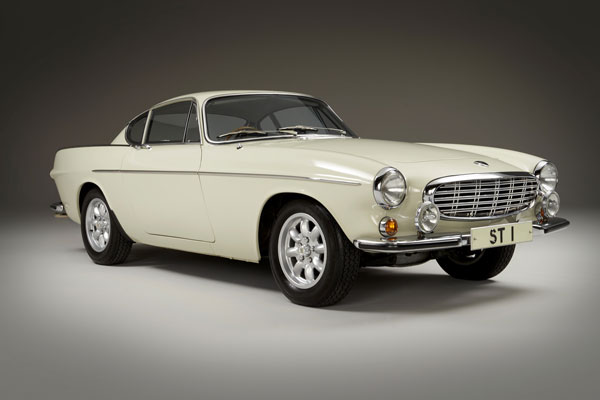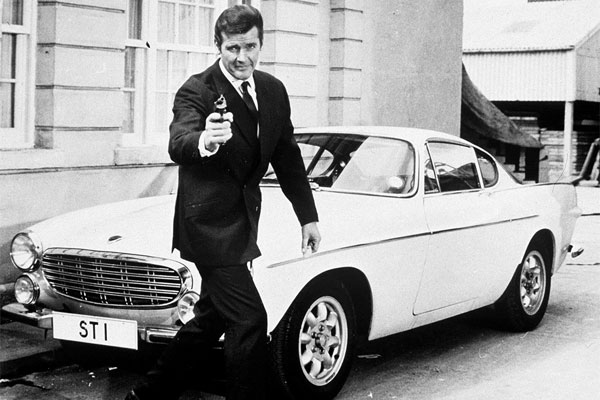Classic Car | Volvo P1800
If you had to name the ‘coolest’ cars of the 1960s, you might very well mention one of (or perhaps a few of) the iconic, and really beautiful, automotive artworks that emerged from European manufacturers across that decade.
From the Jaguar E-Type to the Lamborghini Miura, the Aston Martin DB5 to the Porsche 911, the Alfa Romeo 33 Stradale to the Ferrari 250 GTO to the Jensen Interceptor – and there are plenty more examples – the decade was stuffed with stunning sports cars that would become instant, desirable classics.
But it wasn’t just the vaunted design studios and manufacturers of Italy, Britain and Germany that were churning out these remarkable-looking machines.
Tucked away in Gothenburg, Sweden, and with a reputation for making excellent cars that are safe rather than sexy, Volvo is almost certainly not the first name you’d whisper in a conversation about stunning sports cars of the swinging sixties, and yet the company did indeed do just that with the sparkling P1800.
In fact, the P1800 – a truly stylish, two-door, 2+2, rear-wheel-drive sports car – appeared before almost all the other cars listed above, making its first appearance in 1960 at the Brussels Motor Show.
Now considered a classic of the period, the P1800 had a wobbly pathway to production.
In the mid-’50s, the company had revealed the P1900 (also known as the Volvo Sport) – a fibreglass-bodied two-seater that looked the business but failed to catch on with just 68 examples built.
Undeterred, the company decided on taking another stab at the potentially lucrative European and US sportscar markets.
A Volvo consultant, Helmer Petterson, was deeply involved in the planning of the new car and it was his son, designer Pelle Petterson – who was then working for famed Italian designer Pietro Frua – whose design was chosen for the new model.
The new sports car had a fixed roof, a steel body, and a lot of mechanical components lifted straight from the Volvo’s mid-sized car from the mid-’50s – the 121 or Amazon – but with a shorter wheelbase.
A new engine – the B18 – was to power the car, with the 1.8-litre, 4-cylinder unit developing 100bhp (74.5kW).
Power was sent to the rear wheels via a 4-speed manual transmission, a 4-speed manual with overdrive, or a 3-speed automatic, all with a floor-mounted gear lever. Disc brakes were up front with drums at the rear.
Three prototypes were built by Frua in Italy in 1957-1958, but production became an issue. Volvo was busy and didn’t have sufficient in-house capacity to manufacture the new model so the hunt was on for a manufacturing partner. After considering several companies, they settled for two British firms – Pressed Steel, which would make the bodies, and Jensen Motors (makers of the aforementioned Jensen Interceptor) which would paint and assemble the cars.
The first P1800 emerged from the factory in 1961 but production was not smooth sailing. A host of issues meant Volvo looked quickly to move manufacturing back in-house and it managed to do so in 1963 after 6000 had been built in the UK.
Subsequent models would have the letter S (for Sweden) added to their name to differentiate them from those assembled in Britain.
However, those early British-built models, or one of them at least, would be key in giving the P1800 an early publicity boost.
In 1961, a new TV show was being produced in the UK. Called The Saint, its main character was a suave, spy-like, crime fighter named Simon Templar, and the producers wanted this charming individual – to be played by Roger Moore of future James Bond fame – to drive a suitably stylish car.
Having been turned down by Jaguar in their request to use the new and sparkling E-Type, the producers were more than happy for Volvo to step in with the P1800. It was a PR coup for Volvo and gave the car much visibility across the world.
Over the next few years, the P1800 coupe received only a few tweaks to its exterior look while underneath the skin, engines would get more powerful – a 2-litre, 115bhp (86kW) variant appeared in 1968; and a fuel-injected, 120bhp (89.5kW) version, called the P1800 E, in 1969 – while disc brakes all round were also fitted to later models.
In 1971, a new body variant was introduced, the 1800 ES – a sporting hatchback with an extended roofline and an estate car/wagon rear that featured a large glass tailgate. The new version was produced for two model years, 1972 and 1973.
In 1972, both versions, the E and ES, were produced in parallel, but only the 1800 ES was produced in 1973.
Production came to an end in 1973 with 39,414 models built, of which 5,078 were the ES variant.
Today the P1800, in all its variants, must surely be considered a desirable purchase for any collector of beautiful cars of the 1960s. And it is an a relatively affordable one too – a quick flick through carsales.com.au at the end of April showed one on sale in Australia for less than $90,000. That is still quite a lot of money, of course, but in comparison to the hundreds of thousands, even millions, that other classic sports cars of the era can fetch, that seems like an absolute bargain.
Source: Motor Trader e-Magazine (May 2022)
30 May 2022












